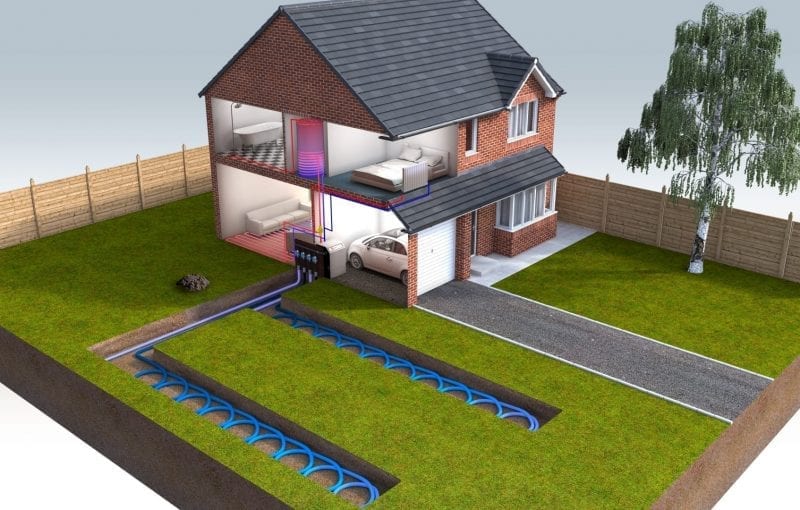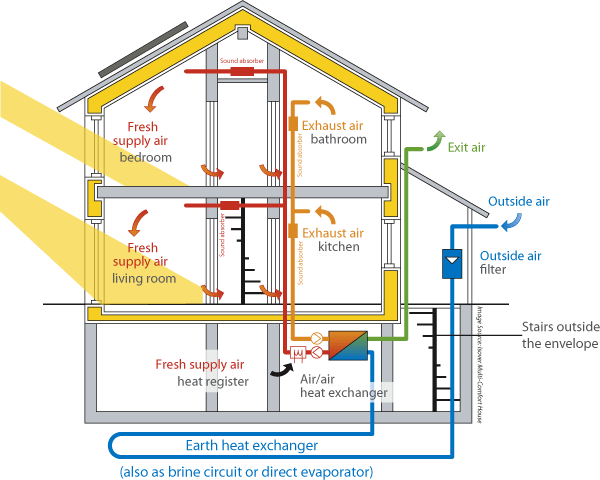AI deep research, directed by our long experience, have allowed the creation of (almost) unique articles in addition to established a peer reviewed works
- Details
- Written by: J C Burke
- Hits: 5726
 At this time of year after 'excessive and continued' rains, several major Rivers are prone to breaching their banks. Especially the Trent around Derby and the upper reaches of the Thames. The accepted flood plain regions. However, this is a result of the river basin in total - and thus we need to look further upstream to see how this 'inundation' has developed.
At this time of year after 'excessive and continued' rains, several major Rivers are prone to breaching their banks. Especially the Trent around Derby and the upper reaches of the Thames. The accepted flood plain regions. However, this is a result of the river basin in total - and thus we need to look further upstream to see how this 'inundation' has developed.
Many commentators speak of problems with 'dredging and clearing waterways', sure this will {update- probably NOT[1]} help - but a major contributory factor has been overlooked, and something that was so common in the past that these so-called floods rarely occurred. This is the buffering aspects 'upstream' due to woodlands and hedges on our hill sides - to slow down the dumping of water within the water course(s). This is echoed, nicely with the extracts below from Erica Gies - who is advocating for a "Slow Water Movement"
Over the years, due to the partial 'industrialisation' of farming {as a business - rather than as custodians of the land} we have witnessed the removal of hedges, woodland strips, woodlands and other aspects that contributed to keeping water within the land itself. The fields that the farmers are utilising have become appreciably larger - by the removal of hedge-rows and woodland strips.
However research shows that this policy of "enlargement" carries additional risks in terms of rainfall interception: See full Research Here - CLICK
"Hedgerows can intercept a substantial fraction of the rainfall that would have fallen onto their projected ground area without their presence. The interception loss in two hedgerows in southern England was found to be 50–60% of gross rainfall in the summer and 40–50% of PG in the winter if related to projected ground area. In regions with climates characterised by high windspeeds, wind-driven rainfall plays a major role in the hydrology of hedgerows."
"A rainfall shadow of a width similar to the height of the hedgerows is found downwind of them and some rainfall concentration can occur near their upwind edge. The analytical model of rainfall interception (Gash, 1979), which was previously used for extensive forests, can be parameterised for hedgerows and reliably predicts their interception loss on the basis of daily rainfall data."[2]
These intercept number are highly significant - 50% of the rainfall. Therefore without these hedgerows that rainfall is draining from the land and into the water courses - and onto our Rivers. The situation with multiple hedgerow removal has to be considered too.
[1] Slow Water Down - not Speed it up! The slow water movement is about empowering individuals and communities, as well as governments, to help restore earth’s water cycles. Here is Erica Gies website where you can find out more. https://slowwater.world See the Read More Section too;
[2] Measuring and Modelling the Rainfall Interception Loss by Hedgerows in Southern England: Mathias Herbst, John M. Roberts, Paul T.W. Rosier, David J. Gowing: The Open University, Department of Biological Sciences: Received 9 June 2006; received in revised form 22 September 2006; accepted 23 October 2006.
- Details
- Written by: J C Burke
- Hits: 11044
With air source and ground source heat pumps what are the key requirement to enable cheap and efficient heating and hot water in the UK?
In order to enable cheap and efficient heating and hot water with air source and ground source heat pumps in the UK, there are several key requirements:
 'Adequate' {Extremely High Levels of:} insulation: The building must have adequate insulation to minimize heat loss and improve the efficiency of the heat pump system. By "Adequate" we mean' substantially in excess of current building regulations standards'. Like the German Passivehaus standard. This would also presuppose an efficient {mechanical or passive} ventilation system with heat exchanger technology and "Earth Pipes" to pre-heat [winter] or pre-cool [Summer] incoming fresh air. See Passivehaus article HERE AT THIS WEB LINK.
'Adequate' {Extremely High Levels of:} insulation: The building must have adequate insulation to minimize heat loss and improve the efficiency of the heat pump system. By "Adequate" we mean' substantially in excess of current building regulations standards'. Like the German Passivehaus standard. This would also presuppose an efficient {mechanical or passive} ventilation system with heat exchanger technology and "Earth Pipes" to pre-heat [winter] or pre-cool [Summer] incoming fresh air. See Passivehaus article HERE AT THIS WEB LINK.- Proper sizing of the system: The heat pump system must be properly sized to match the heating and hot water demands of the building. Over-sized or undersized systems can result in inefficiencies and higher costs.
- Suitable location: For ground source heat pumps, the site must have suitable geology and hydrology to support the installation of the ground loop. For air source heat pumps, the location must have adequate airflow and temperature differentials to enable efficient operation.
 High-efficiency heat pump equipment: Choosing a high-efficiency heat pump with a high coefficient of performance (COP) can significantly improve the efficiency and cost-effectiveness of the system.
High-efficiency heat pump equipment: Choosing a high-efficiency heat pump with a high coefficient of performance (COP) can significantly improve the efficiency and cost-effectiveness of the system.- Energy-efficient hot water storage: Using an energy-efficient hot water storage tank can reduce the amount of energy required to heat water and improve the overall efficiency of the system. This is because an highly insulated hot water storage tank can act as a 'buffer' or heat-store, between energy supply and demand - particularly relevant at colder period, say night time in winter - so supplement the energy needs from the heat store.
- Climate-appropriate design: The design of the building should take into account the local climate and weather conditions to optimize the performance of the heat pump system. This would also include aspects of the property and its orientation {to the Sun, and prevailing winds}, earthworks and planting to mitigate 'wind chill' effects on walls, windows and roofs. PDF scan of 1981 Research Article {Wind and Building Energy Consumption: an Overview} HERE
By meeting these requirements, air source and ground source heat pumps can provide cost-effective and efficient heating and hot water in the UK. As can be seen in some of the photo's, particularly with Ground-Source Heat Pumps, associated equipment, controllers, buffer tanks and installation, considerable space is needed. Therefore we strongly recommend new properties be build with a basement {in light of the deeper foundations required from Building Control this may not be as expensive as imagined}. Additional benefits of basement include, Rainwater Storage, Computer Sever Room, Distribution to the floor above for Internet, Telephone, Sound Systems etc.
- Details
- Written by: J C Burke
- Hits: 7058
What are Passivhaus Standard Requirements?
The requirements for a home to meet Passivhaus Standards. The Passive House Institute detail these as follows:
- Space Heating Energy Demand should not exceed 15 kWh per m2 of net living space per year.
- The Renewable Primary Energy Demand, the total energy to be required for all of your home’s domestic applications, must not exceed 60 kWh per m2 per annum.
- For Air-tightness, a maximum of 0.6 air changes per hour is allowed at 50 Pascals pressure (ACH50). This will be verified with an onsite pressure test.
- Thermal comfort should be met for all living areas for energy-efficient houses in both summer and winter seasons. This shouldn’t exceed 25°c for any more than 10% of the hours in a year.
- The "fabric first" concept of making sure the property is heavily insulated, is paramount - and generally to a much higher standard than current UK Building Regulations.
See our detailed blog regarding Passive House Standards as defined in the US/UK CLICK HERE
The image indicates the mechanical ventilation system [red and blue circuits] - in this example the fresh incoming air has been routed under the basement to pick up some 'heat' from the earth [in the winter] and to cool this same air in the summer - "Earth Heat Exchanger" A further method to reduce the total energy requirement of this design.
Also indicated is the summer sun entering the building via the windows, with suitable shading {roof overhangs] to prevent over-heating in the summer. However in winter, the lower sun will penetrate deeper into the structure, thus giving a valuable solar gain in these colder months.
The Basement will also be used for rainwater harvesting - to be filtered and used for flushing toilets and even bathing and showering etc. Thus reducing the cost of drinking water into the property.
- Details
- Written by: J C Burke
- Hits: 6286
 Richard Blyth is the Head of Policy Practice and Research at the RTPI
Richard Blyth is the Head of Policy Practice and Research at the RTPI
There can be few in the planning world in England who are unaware of what I think it is fair to call a crisis over water quality. It goes by the tongue-twisting title of Nutrient Neutrality. Or you could say making sure that new development is net zero nitrate (or phosphate). To the best of my comprehension it began as a result of a European Court of Justice ruling (remember them?) in 2018 regarding the operation of the EU Habitats Directive (Remember that? Of course you do, it’s still in force). As a result Natural England began issuing directives of its own to local planning authorities, starting in the Solent area of Hampshire stating that no planning permissions for housing could be issued unless applicants could demonstrate that new housing would not add at all to the load of pollution coming out of sewage treatment works. One way of doing this is to create additional wetland habitat to replace the habitat damaged by ongoing pollution.
Anyone familiar with wetlands will soon appreciate that these priceless habitats take some time to be created – it is estimated five years. So mitigation – sorry eliminating – the impact of a single house is not easily achieved. Nevertheless with a lot of creative thinking on the part of local authorities in Hampshire and housebuilders a collective tariff based scheme was devised and it began operation around early 2019.
Sadly the progressive monitoring of Natural England has identified more and more habitats at risk from polluted water and more and more local planning authorities were told to stop granting planning permissions unless Natural England was satisfied about mitigation. First in the Somerset Levels, then in a lot of Herefordshire and Shropshire and parts of Kent. The count reached 74 planning authorities in March 2022, a kind of grand finale. (At least I hope it is a finale.) The Home Builders’ Federation estimates that about 100,000 homes are held up by this policy.
Those with long memories will recall this is not the first time we have had such a crisis. Threats to the Dartford Warbler and other nesting birds held up 40,000 homes around 2007 west of London while Natural England and housebuilders tried (eventually successfully) to find ways to allow people in new homes to walk their dogs without hurting wildlife.
The Government has listened to strong voices of concern from the RTPI, the HBF, the Construction Leadership Council and many others calling for resolution of this problem. In a response to a DEFRA consultation on environmental targets, the RTPI also called recently for more ambitious targets on farming pollution to be set for 2037 than DEFRA is proposing. It does seem strange that it is new housebuilding which is being held almost solely responsible for a problem which is due to both agricultural pollution and also existing sewage.
A Government press release last week proposed a new scheme with (as yet unknown) funding towards the improvement of water treatment works to unblock the flow of new permissions. The Government has also proposed a new “legal duty on water companies in England to upgrade wastewater treatment works by 2030 in ‘nutrient neutrality’ areas to the highest achievable technological levels”. However there has been no announcement regarding the contribution of agriculture.
It is clearly imperative that something is done quickly. The most critical casualties are small building firms dependent on being able to develop sites they have bought, as the Financial Times reported on 18 July (£). But inside the planning profession there are longer term issues. Where local plans depend on allocating land within (what is now deemed) critical river catchments, there is a concern that local plans will be held up for example in Shropshire and Greater Norwich. It seems like the last thing we need is slower local plans.
The RTPI believes that the current state of planning for the environment needs a shake up. We, along with the Broadway Initiative, have been developing the concept of local environment improvement plans (LEIPs) which would bring all the current plans for water, habitats, farming support, air quality and coastal management into a single whole. This would make the key task of aligning environmental plans and local plans a lot easier, which, for example, could mean that plans such as the Greater Cambridge local plan would have a guaranteed water supply to all sites. A starting point for LEIPs could be the Local Nature Recovery Strategies brought in by the Environment Act 2021.
There are so many reasons now why we cannot let environmental planning continue to be a side show. Drought, flood, heat waves, and even sea level rise are all needing long term solutions. And for public health reasons we now know just how important easy access to nature for our own species is - for all of us.
- Details
- Written by: J C Burke
- Hits: 9081
This report expands on the Location of DevelopmentLocation of Development series of research examining the location of approved planning applications for major residential developments across England. Using new data sources, this research seeks to explore the accessibility of these new developments to a variety of different amenities.
You can download the report here or read in full below
Report authors
Samuel Spencer, RTPI Policy and Data Analyst
David Pendlebury, MSc
Acknowledgements
![]()
This report has been made possible thanks to the use of transport data originating from the Department of Transport (DfT) and provided by the National Audit Office (NAO) as well as thanks to a private database of planning approvals that was curated and made available by LandTech.
Executive Summary
This report builds on the Royal Town Planning Institute’s Location of Development work series commenced in 2015. This third report analyses planning permissions granted between 2015-2019 in England.
The location of new development, defined in this report as recent planning permissions for new major residential housing, can significantly impact accessibility to key amenities for residents across England in several ways including:
- Access to amenities that support economic opportunities, healthcare services, and educational facilities varies widely by location and mode of transport or new planned developments.
- In locations with a major agglomeration of jobs such as London and the North West, reaching key amenities by public transport takes less than an hour. In other regions, a comparable journey can take nearly twice as long.
- This research highlights the stark differences across England. For example, in the 10% most accessible planned developments, access to jobs and educational facilities will be within a 30-minute walk. In the 10% least accessible planned developments, access to the same facilities will be over 90 minutes walking time away.
- We analysed new residential developments in England based on the location of planning permissions approved between 2015 and 2019. This showed that access to amenities from these locations is twice as fast by car compared to public transport, and nearly three times quicker than by walking. Average public transport travel times to hospitals or large employment centres were also comparable or slower than walking, which may not be a realistic option for all residents of these new developments.
The impacts of such diversity in the location of development are potentially severe and wide ranging. This report recognises that some individuals will make a personal choice to live in more isolated locations. However, there is a significant proportion of planned development and major housing sites which be poorly connected to key amenities by any modes, including the most sustainable, healthy and affordable transport options.
This impacts on those who live in the least accessible of new developments in multiple ways. They will have less access to economic opportunity, reduced access to - and choice of - healthcare and educational provision, and fewer options to choose their mode of travel.
Where there exists a positive link between accessibility to key services and house prices, a lack of accessibility will serve to widen economic and health inequalities. New communities with poor accessibility encourage private vehicle dependent travel, which undermines initiatives to encourage sustainable transport use in line with net zero objectives and promote healthy lifestyles.
